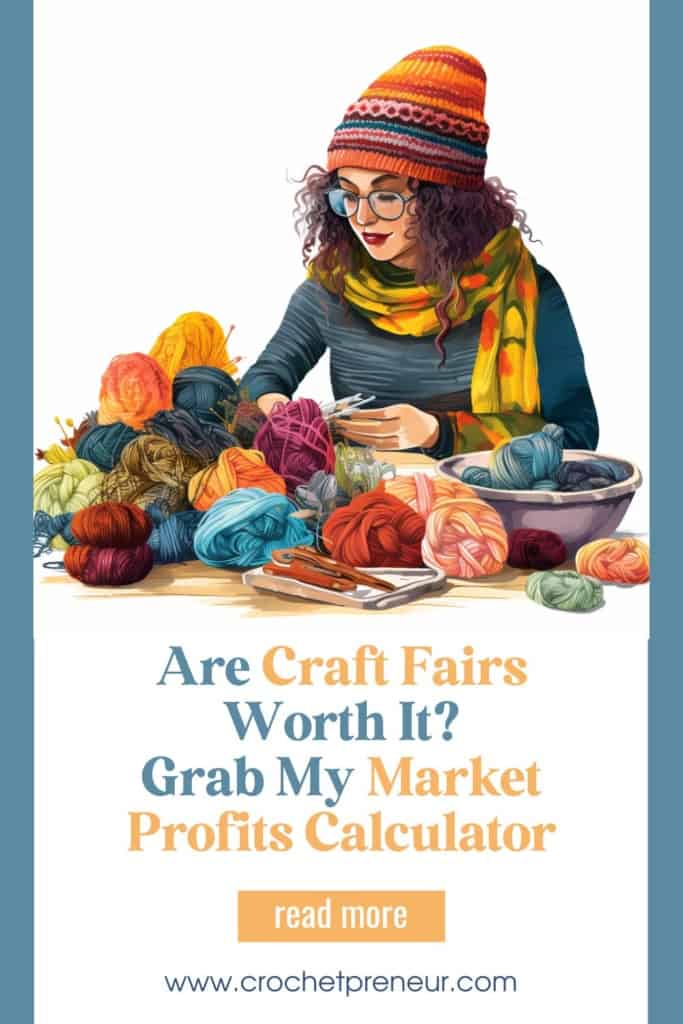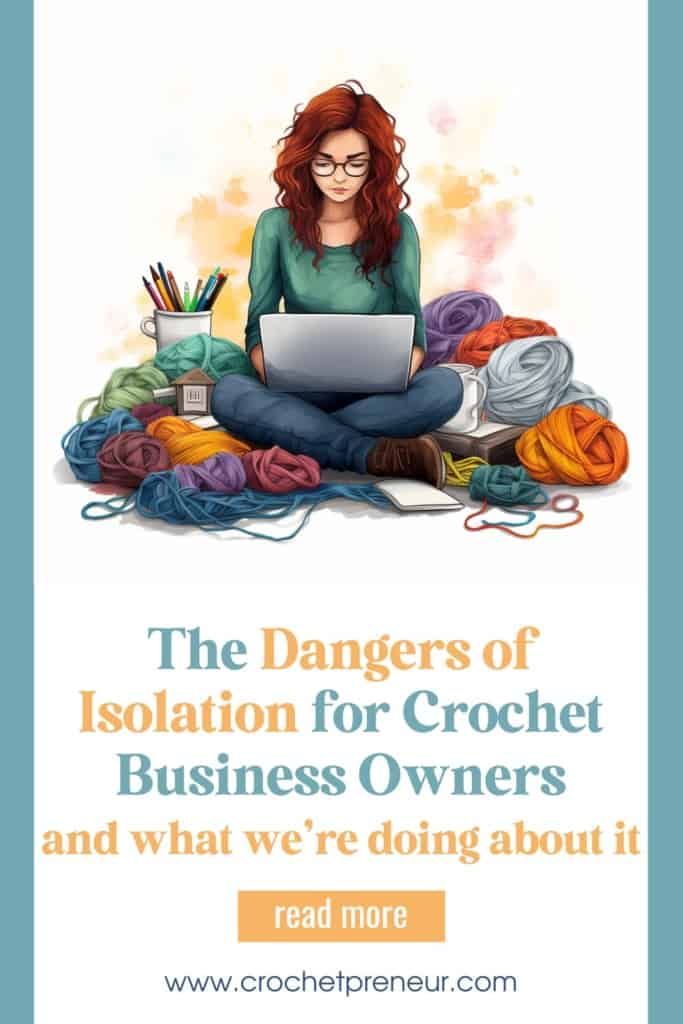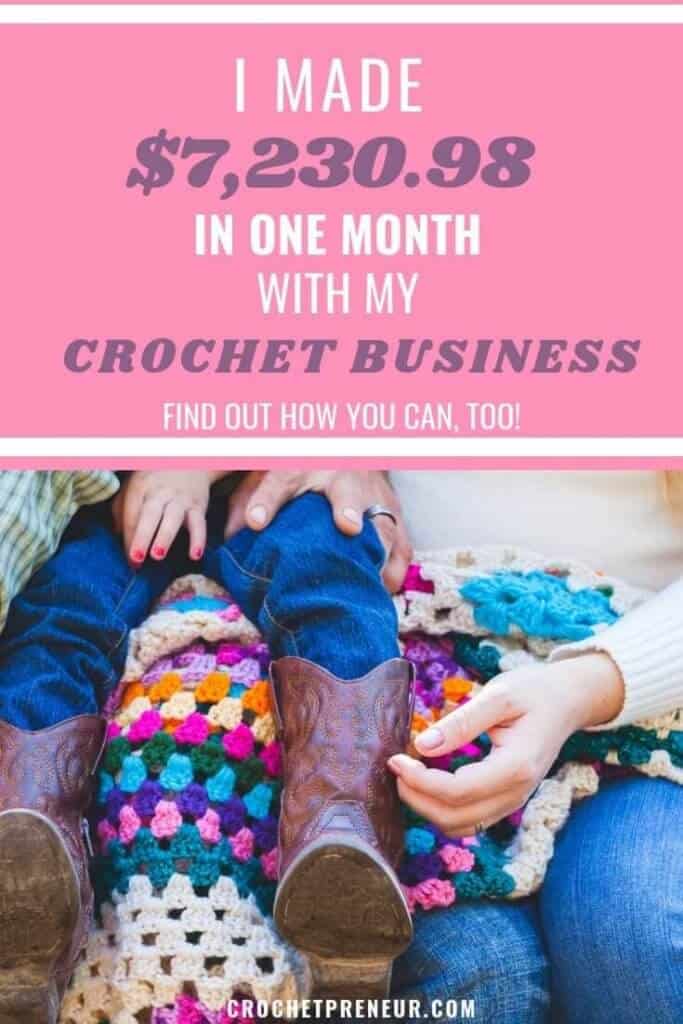Calculating craft fairs profits is tricky! Markets can be a fantastic opportunity for crochet business owners to showcase their handmade creations, build brand awareness, and generate sales. However, many makers find themselves questioning whether they are actually making a profit after participating in these events. Understanding the intricacies of pricing and calculating profit margins is crucial to ensure that the time, effort, and resources invested in craft fairs are truly worth it. In this episode of Crochet Business Chat, we dive deep into the economics of craft fairs and unveil the details that makers often miss when counting the cost.

Embarking on a crochet business journey is both exciting and daunting. While the joy of crafting and sharing your creations with the world is unparalleled, the financial side of things can sometimes feel like a tangled skein of yarn. But fear not! With a little guidance and understanding of profit margins, you can weave your path to success. Let’s unravel the intricacies of pricing strategies, uncover the hidden costs of craft fairs, and stitch together the importance of truly knowing your numbers.
The Heartbeat of Your Business: Understanding Margins
A surprising number of crochet business owners, despite their talent and dedication, find themselves in the dark when it comes to profit margins, net profit, and wages. This lack of understanding can be a significant roadblock to achieving business success. Think of understanding your margins as knowing the rhythm of your business’s heartbeat. Without this knowledge, it’s tough to gauge if the hours of love and labor you pour into your creations and craft fairs are translating into a sustainable income.
Crafting Your Ideal Pricing Strategy: More Art than Science
Crafting the perfect price tag for your creations is a blend of math and intuition. The formula to light your way starts with the Cost of Goods Sold (COGS). This calculation, which includes Supplies + Time x Wage, ensures you’re not just covering costs, but also valuing your time (and giving your business some room to scale by paying contract crocheters in the future). Then, you need to think beyond yarn and hooks. Factor in overheads like product tags and shopping bags. Finally, this is where art meets science. Divide your total by (1 – desired retail margin) to strike a balance between fair pricing and healthy profit.
Get my Handmade Product Pricing Calculator here.
The ‘Profit First’ Philosophy
This approach helps you visualize and allocate your profit. Aim for a profit margin between 5-10%. This percentage is your reward for your creativity and hard work. Next, consider the Owner’s Wage, which should be between 35-50%. Remember, you’re the heart and soul of your business, and you deserve fair compensation. Lastly, always set aside around 15-20% for taxes to keep everything above board and ensure your business runs smoothly. So, at a low range, you would want a retail margin of around 45-55%.
The Unseen Expenses of Craft Fairs
Craft fairs are a fantastic way to showcase your talent, but they come with costs that can sneak up on you. Securing that perfect spot at a fair has a price, known as the Booth Fee. Then there’s the matter of Travel Expenses. Whether it’s gas for a local fair or a hotel for a weekend event, these costs can quickly add up. Meals are another essential consideration. Keeping yourself fueled during long fair days is crucial for your energy and well-being. Lastly, don’t forget about Credit Card Processing Fees. While they might seem small, they can make a significant difference in your overall profit.
Because these fees are over and above the fees you would pay for simply selling a product, whether online or in person, I calculate using my Marketplace Profits Calculator as separate line items…and the cost for these come out of our retail margins. Why? Because every choice we make in our business has consequences and if we roll these costs into our regular pricing strategy, our analytics about the overall cost of our chosen marketing strategies becomes skewed. It’s important that we know the “why” behind our numbers and this is one way to do that.
Sales Tax: The Delicate Dance
Always separate sales tax from product prices. This golden rule keeps things transparent and straightforward for both you and your customers. In many places, blending sales tax into product prices isn’t just frowned upon; it’s illegal. By keeping them separate, you ensure that your profit margins remain undiluted and that you’re always in compliance with local regulations.
Tools to Elevate Your Business Game
My upcoming automated Marketplace Profits Calculator promises to be a guiding star for crochet business owners. Designed to illuminate your break-even sales amount, it provides clarity on where your business stands. Additionally, it will highlight your net profit based on actual sales, ensuring you’re always informed and can make the best decisions for your business’s growth.
The calculator is currently in beta-testing but you can get on the waitlist to be notified when it becomes available.
Conclusion
Embarking on a crochet business journey is a tapestry of joy, challenges, and learning. Every stitch, every row, and every finished piece tells a story of passion and dedication. By understanding the financial threads that weave through your business, you can craft a narrative of success and sustainability. Remember, every moment you invest, from the first loop to the final sale, is a testament to your love for the craft. Cherish it, value it, and let it shine.
More Craft Fair Tips
Simple Tips for Mastering Your Craft Fair Inventory








